

Created in the 1990’s, the iconic rock musical Rent has sustained its immediacy and theatrical power for over twenty-five years. The story
offers an intimate encounter with a diverse group of young artists living in the lower
east side of New York as we follow their daily struggles to make ends meet during
the siege of HIV AIDS. Their relationships remind us of the power of a supportive
community, and most of all, the hope and joy that love offers in the midst of loss
and despair. Please enjoy this peek behind the scenes from our 2023 production of
Rent at Kennesaw State University.
1996 Tony Award for Best Musical and Pulitzer-Prize Winner for Drama
Content Warning
Rent is rated PG-14 and contains adult language (profanity and slurs), as well as adult content and themes dealing with death, disease (HIV/AIDS), suicide, self-harm, homelessness, addiction, and sexual situations.
If you are curious about specific content and whether or not it might be appropriate for you or a young person in your family, check out our detailed show website for more information from our dramaturgy team or check out various internet sources and criticism on the piece.
This production will also include: depiction of simulated drug use (including smoking herbal cigarettes onstage), brief
moments of flashing lights, loud rock music throughout, and actors entering and exiting
through the house.
Memorial AIDS Quilt
Kennesaw State Dept of Theatre & Performance Studies displayed the Memorial AIDS Quilt
in the Stillwell Theatre during the run of Rent.
The general public was invited to visit the Memorial Quilt in our Stillwell Theatre to observe and reflect on the patchwork, its symbolism, and its history.
A Brief History:
After recognizing the toll of AIDS in San Francisco, human rights activist Cleve Jones established the AIDS Quilt in 1985 as a grand memorial to honor the lives of people who had died from AIDS. This bitter-sweet tribute, started by a small group of loved ones and grew to commemorate the lives of over 50,000 individuals, most of whom were men. During the National March on Washington for Lesbian and Gay Rights, the AIDS Quilt first appeared in the National Mall in D.C. which then only had 1920 panels. After the public release of the quilt people from all over the country began to donate their own quilts and unite across the country. After a 4-month tour in 1988, the quilt tripled in size, raised almost 500K in funds to help those suffering, and then was placed on the grounds of the White House. Each following year, the AID’s Memorial Quilt received more attention and additional panels. Thirty-eight years have passed since its founding and the quilt now has approximately 50,000 panels and has traveled to several cities in the U.S. including Atlanta. The quilt has become a beautiful way for loved ones to keep alive the stories of the thousands of people lost to AIDS and has become a monumental segment of queer history in the U.S.
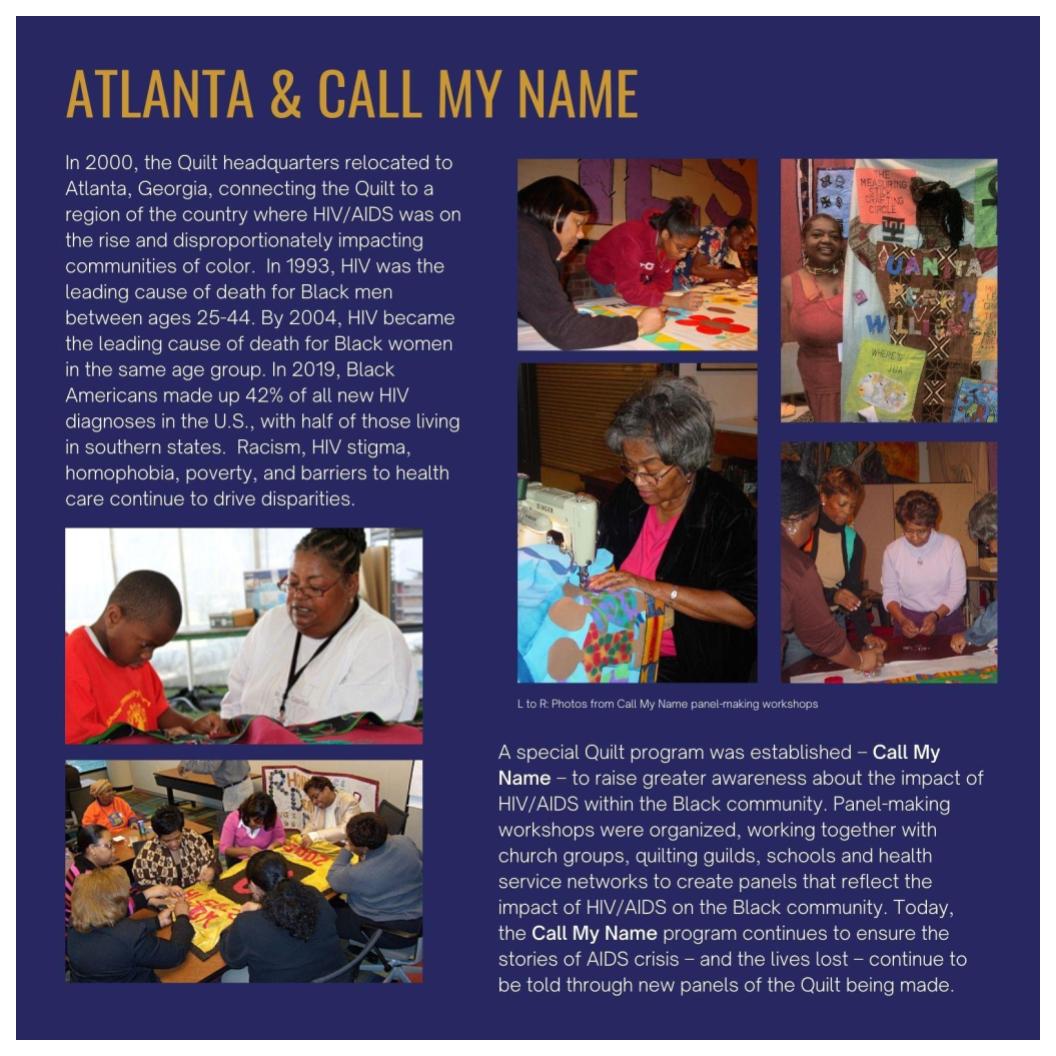
Meet The Director

Amanda Wansa Morgan is an Atlanta-based music director, composer, director, and actor who serves as Coordinator of Musical Theatre & Associate Professor at Kennesaw State University. At KSU, she teaches classes in musical theatre performance, voice, acting, and musical theatre history and literature. In recent years at KSU, she has directed productions of The Spongebob Musical, Ragtime, Heathers, and A Man of No Importance; and music directed productions of Bring It On, The Spitfire Grill, and Thumbelina (world premiere). Amanda previously served on faculty at The University of Mississippi and also as Director of Music Education at Charleston Stage. Additionally, she has professionally music directed at The Alliance Theatre, Six Flags Over Georgia, Atlanta Lyric Theatre, Jennie T. Anderson Theatre, Actor’s Express, Synchronicity Theater, Wallace Buice Theatre Company & Buicentennial Productions, Playhouse on the Square, Post Playhouse, and Osceola Center for the Arts. She occasionally serves as a Teaching Artist for The Alliance Theatre, The Atlanta Lyric Theatre, and the Jennie T. Anderson Theatre. She has composed original music for productions of A Christmas Carol, Thumbelina, The Velveteen Rabbit, A Midsummer Night’s Dream, Mary Had a Little Ham, Polaroid Stories, We Made History: A TYA Musical, Twelfth Night and additional projects.
Favorite professional Music Direction credits include The Color Purple (2018 Suzi Bass Award for Music Direction, 2018 BroadwayWorld Award in Music Direction), Jesus Christ Superstar, Songs for a New World, Hairspray, Avenue Q, Always Patsy Cline, and The 25th Annual Putnum County Spelling Bee. As composer, her original musicals have been fully produced at Orlando Shakespeare Theatre, Charleston Stage, Young Harris College, and Kennesaw State University. Amanda has an MFA in Acting from The University of Central Florida and undergraduate degrees in Music and Theatre from The Florida State University. She has also worked as a professional actor throughout the Southeast since 2001 in shows such as Urinetown (Pennywise), The 25th Annual…Bee (Rona Lisa Peretti), Love’s Labours Lost (Princess of France), and Tony & Tina’s Wedding (Tina). Amanda has a Certificate of Figure Proficiency from Estill Voice Systems and she is an active member of Musical Theatre Educators Alliance (MTEA), currently serving as Secretary to the Executive Committee until 2022. She is also a member of the Southeastern Theatre Conference (SETC), National Association of Teachers of Singing (NATS), Dramatist’s Guild, and ASCAP. Amanda is the author of book chapter “Women in CCM (Contemporary Commercial Music)” in the Rowan & Littlefield book So You Want to Sing Music by Women. www.amandawansamorgan.com
HIV/AIDS CRISIS
AIDS - Acquired Immunodeficiency Syndrome (AIDS) is a chronic, potentially life-threatening condition caused by the Human immunodeficiency virus (HIV). By damaging your immune system, HIV interferes with your body's ability to fight infection and disease.
About Living with AIDS
HIV/AIDS Timeline
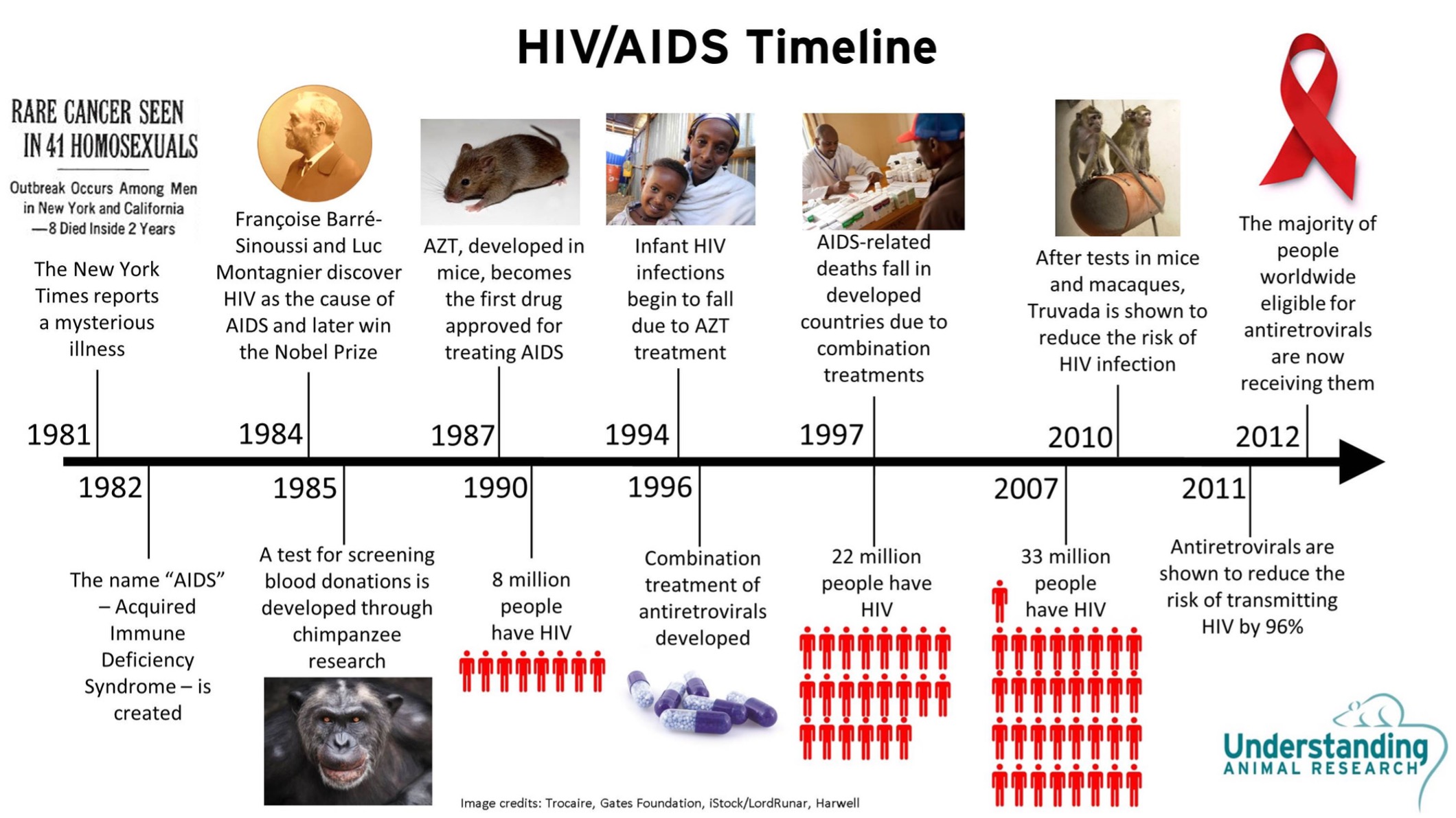
Relevant Terminology
People First Language puts the person before the illness or medical condition and describes what a person has, not who a person is. People First Language helps to eliminate prejudice and it removes value judgements about the person. When we describe people by labels or medical diagnoses, we devalue and disrespect them as individuals.
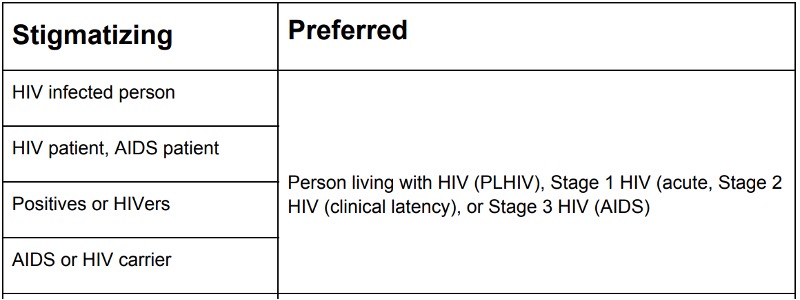
Activism
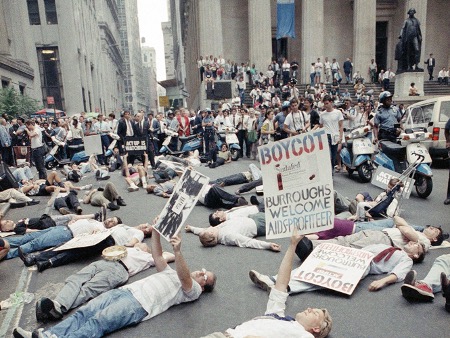
ACT UP — the AIDS Coalition To Unleash Power — is a diverse, non-partisan group of individuals, united in anger and committed to direct action to end the AIDS crisis. The organization was founded by Larry Kramer, the playwright of “The Normal Heart” (a play about AIDS in NYC in the 80s produced by KSU In 2020)
Website: https://actupny.com/
Article, “How Act Up Changed America,” New Yorker: https://www.newyorker.com/magazine/2021/06/14/how-act-up-changed-america
The organization is known for their disruptive and creative strategies of performance protest. Demonstration tactics included “kiss-ins,” “die-ins,” spilling ashes of AIDS victims on White House grounds. They were defiant, courageous and committed to having their voices heard.
See, News footage (1988): Protestors Tie Up Traffic
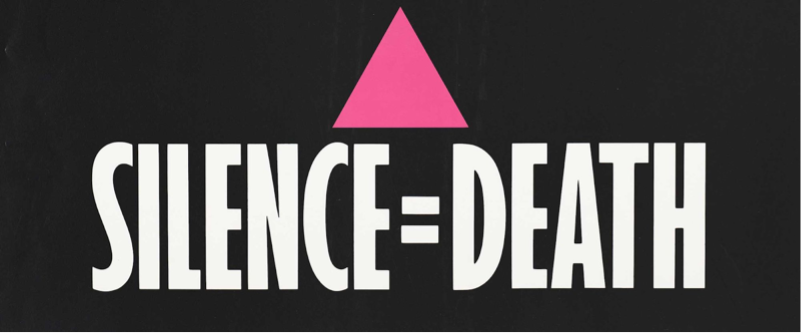
ACT UP popularized the slogan “Silence = Death” The pink triangle was used to identify gay men for persecution during WWII. triangle was reclaimed in the 1970s by pro-gay activists. Today, the pink triangle is one of the world’s most recognizable symbols of pride, resistance, and solidarity for the LGBTQ community.
Treatment
HIV infects CD4 cells and makes more copies of itself. Over time, HIV causes a decline in the number of these cells. So getting routine CD4 cell counts done is the main way to keep track of your immune health. In HIV-negative people, normal CD4 cell counts are 500–1,500/mm3 of blood. Doctors diagnose AIDS when a person's CD4 level drops below 200 cells per cubic milliliter of blood—even if there are no symptoms.
AZT (Azidothymidine) a medication to treat AIDS. Originally designed in the 60s to combat cancer. During the AIDS epidemic, the need for a cure was so strong, AZT was released while it was still in its trial stage. This led to the death of many people from the drug alone.
TIME Magazine article regarding the AZT controversy:
https://time.com/4705809/first-aids-drug-azt/
Videos:
HIV Today
Behind the Scenes
Storytellers
Design
Cast
Mark - Jude Hilton
Roger - Kourage Cooper
Benny - Lance Avery Brown
Mimi - Mya Burns
Maureen - Reyanna Edwards
Joanne - Jessica Hilliard
Collins - Tyler Vanduvall
Angel - Deshawn Williams
Ensemble - Copeland, Amarih SoVann , Ari Palmer (Intimacy Captain), Brisa Mendez, Brooke Fleurimond, Christopher Nastasi, Ebony Golden, India Smith, Joshua Shephard, Jenna Livingston, Maisy Winn, Maurice Clermont, Naomi Green (Dance Captain), Nicole Price, Sammy Giron
U/S Mark/Roger - Søren Tucker
U/S Benny - Gabriel Ocasio
U/S Mimi/Maureen - Alisa Milan
U/S Joanne - Ashlee McNeil
U/S Collins - Anthony McDonald
U/S Angel - Maxwell Price
Swing Ensemble - Jordan Rivers
Swing Ensemble - Tai Cossier
Production Team
Music Director - John-Michael d'Haviland
Choreographer - Timothy Ellis
Scenic Designer - Ming Chen
Costume Designer - Ricky Greenwell
Lighting Designer - Mack Scales
Sound Designer & Audio Engineer - Clay Garland
Properties Manager - Mace Gallagher
Resident Dramaturg - Dr. Tom Fish
Production Dramaturg - Issa Solis
Stage Manager - Eliza Craft
Asst. Stage Manager & Asst. Properties - Micah Martin
Asst. Director - Issa Solís
Asst. Music Director - Brayden Gailey
Asst. Choreographer - Ian J. Smith
Asst. Lighting Designer - Kaliee Wang
Asst. Costume Designer - Alanna Gordon
Asst. Costume Designer - Michelle Lee
Asst. Scenic Designer - Dani Ramos
Asst. Technical Director & Asst.
Scenic Designer - Ameer Hashem
Scenic Charge - Ash Bingham
Asst. Properties - Chloe Taylor
Asst. Sound Designer - Jade Roman
Rehearsal Photos
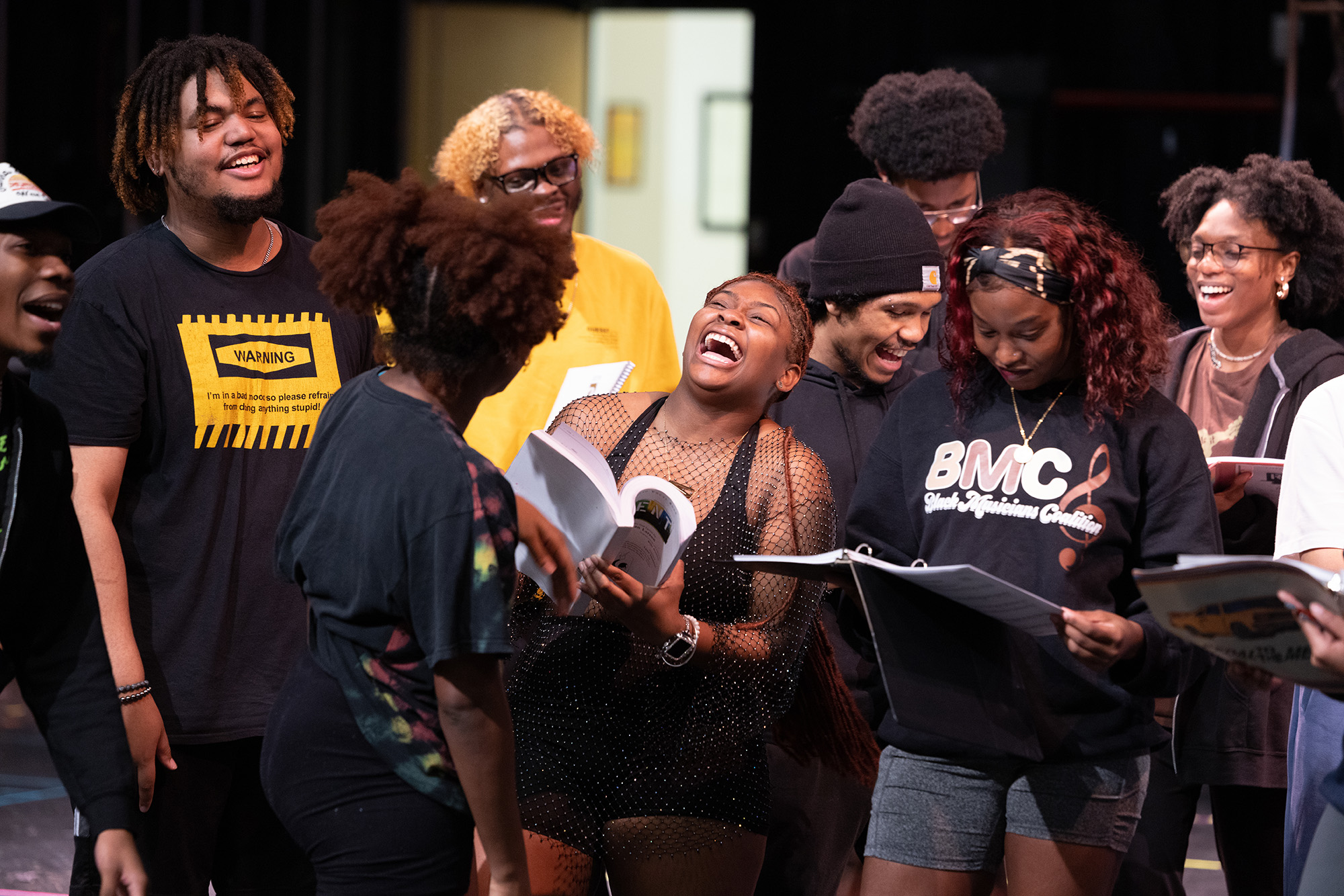


Educational Videos
On the World of the Musical